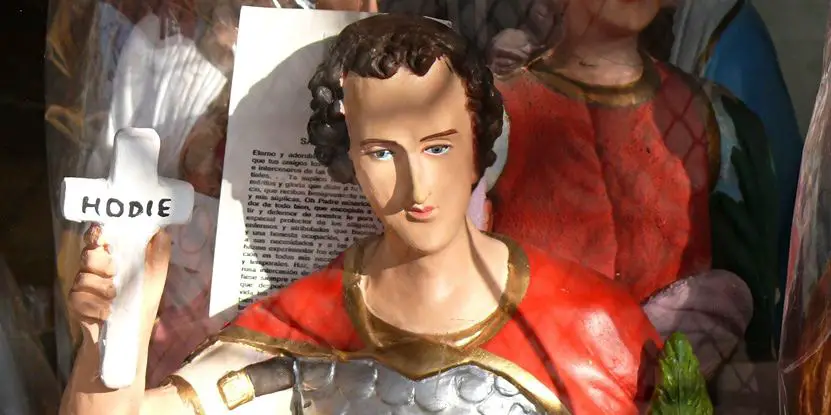Saint Robert Bellarmine was an Italian Jesuit who was a Cardinal of the Catholic Church, he was a very important figure in the times of the Counter-Reformation, he was canonised in 1930 and named Doctor of the Catholic Church, find out these facts and much more below.
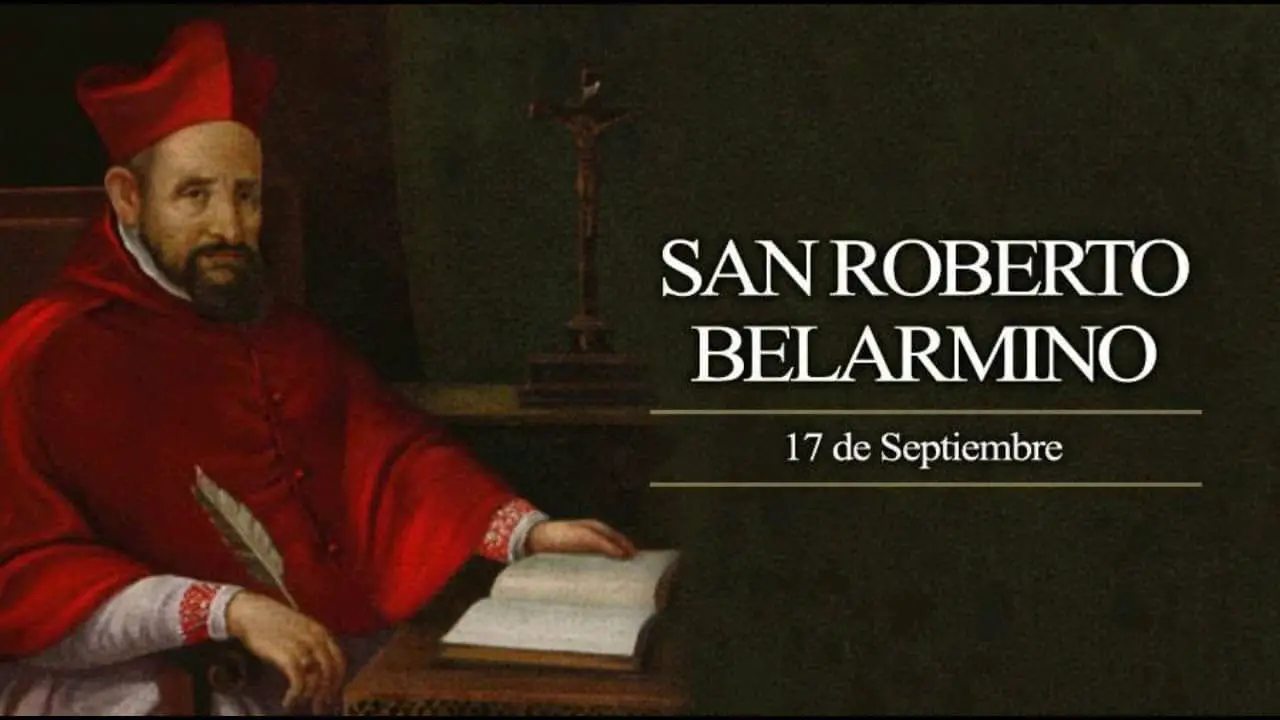
Biography of Saint Robert
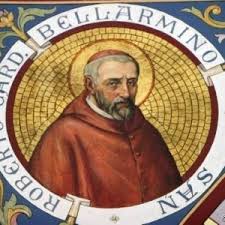
Saint Robert Bellarmine was born in Montepulciano, the son of noble but impoverished parents, Vincenzo Bellarmine and his wife Cinzia Cervini.
Another saint with noble parents was St Pancrazio. St Robert’s mother was the sister of Pope Marcellus II (See: How many popes have there been from antiquity to the present day).
As a child he knew Virgil by heart and composed a number of poems in Italian and Latin. One of his hymns, on Mary Magdalene, is included in the Roman Breviary.
He entered the Roman Jesuit novitiate in 1560 and remained in Rome for three years. He then went to a Jesuit house in Mondovi, Piedmont, where he learned Greek. While at Mondovì he came to the attention of Francesco Adorno, the local Jesuit provincial, who sent him to the University of Padua (see St Anthony of Padua).
Learn many more facts about the life of St Robert in the video below; the saint had a very long life in the service of the Church, so his biography contains important facts that you will certainly want to know.
The studies of St Robert
St Robert Bellarmine’s systematic theological studies began in 1567 and 1568 in Padua, where his teachers were followers of Thomism. In 1569 he was sent to complete his studies at the University of Louvain in Flanders. There he was ordained a priest and became famous as a teacher and preacher.
He was the first Jesuit to teach at the university, and his subject was the Summa Theologica of Thomas Aquinas. He remained at Louvain for seven years, and in 1576, while ill, he travelled to Italy, where he remained at the behest of Pope Gregory XIII to give a lecture on polemical theology at the new Roman College, now known as the Pontifical Gregorian University.
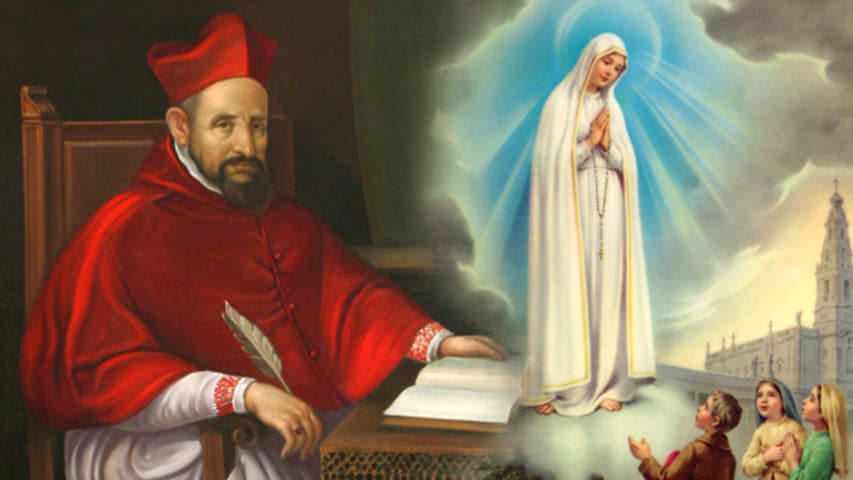
He later worked for the beatification of Aloysius Gonzaga, who had been a student at the university during the reign of St Robert. Bellarmine was professor of theology until 1589; after the assassination of Henry III of France in that year, Pope Sixtus V sent Enrico Caetani to Paris as commissioner to negotiate with the Catholic League of France, and chose Bellarmine to accompany him as theologian; St Robert was in the city during the siege of Paris.
He was appointed rector of the Roman College in 1592, examiner of bishops in 1598 and cardinal in 1599. Immediately after his election as cardinal, Pope Clement appointed him cardinal inquisitor, in which capacity he served as one of the judges in the trial of Giordano Bruno, and concurred in the decision condemning Bruno to be burned at the stake as a heretic (See: Who the Christian Church Called a Heretic).
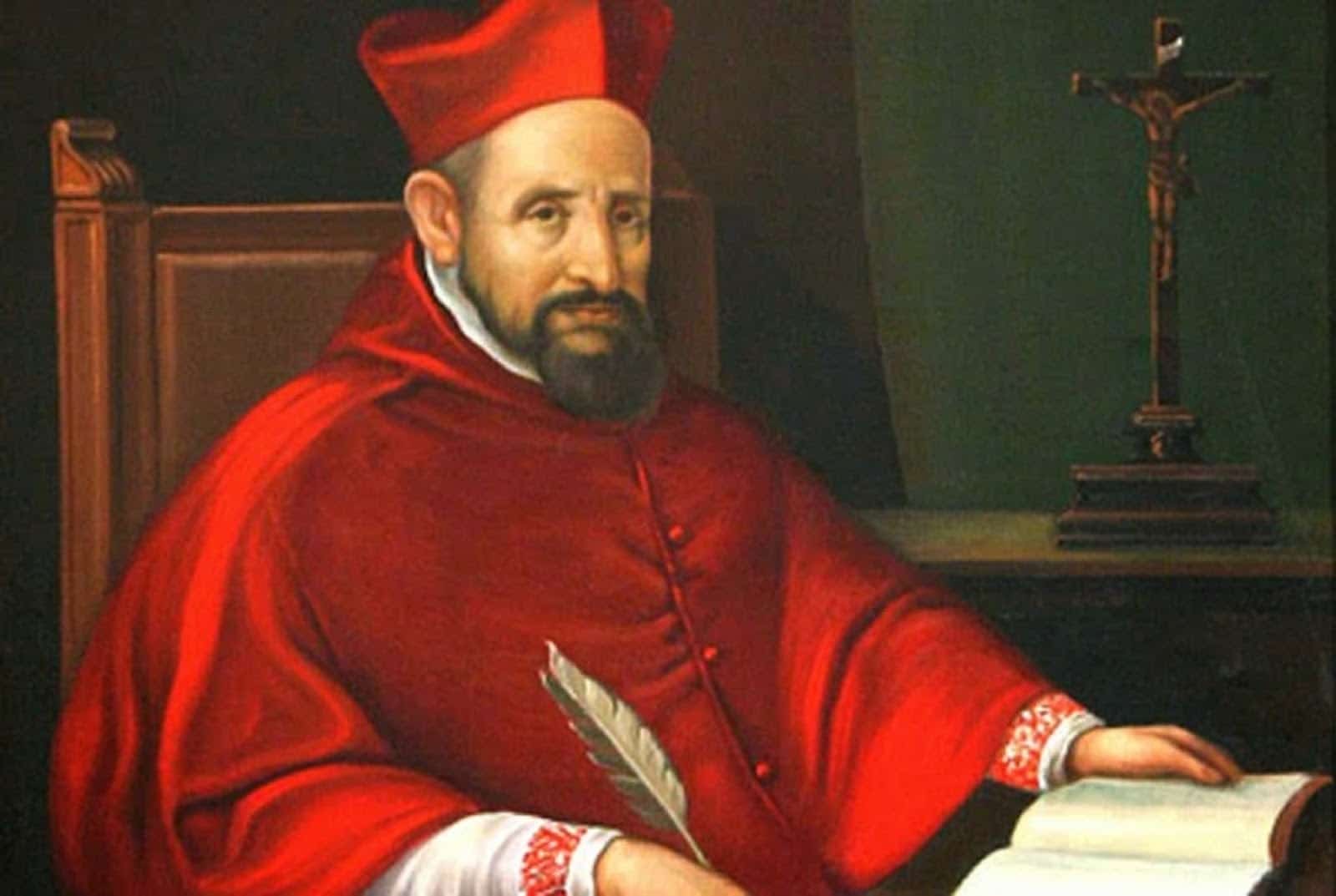
In 1602 he was appointed Archbishop of Capua, where he wrote against pluralism and the non-residence of bishops in their dioceses. As bishop, he implemented the reform decrees of the Council of Trent. He received some votes in the conclaves of 1605 that elected Pope Leo XI, Pope Paul V, and in 1621 when Pope Gregory XV was elected, but his being a Jesuit worked against him in the eyes of many of the cardinals.
Controversy with Galileo
The last major controversy in Bellarmine’s life came in 1616 when he had to admonish his friend Galileo, whom he admired. He did so on behalf of the Holy Office, which had decided that Copernicus’ heliocentric theory was contrary to Scripture. The admonition amounted to a warning against proposing theories that had not yet been fully proven, except as hypotheses. This shows that saints are not infallible.
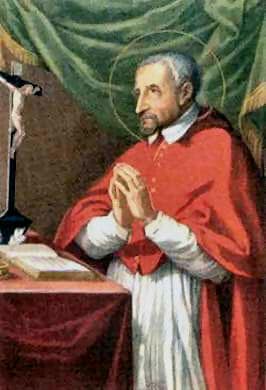
Robert Bellarmine was the “key man” in the famous controversy between the Church and Galileo. In fact, the two men were close friends. Galileo even dedicated one of his books to Bellarmine.
St Robert Bellarmine was able to approach Galileo on a very personal basis. But the tension was so great that the friends could not resolve it.
The controversy was to become one of the most important in history: the relationship between science and theology, the relative importance of human observation and revealed truth.
Galileo was one of the first to use the telescope. His measurements led to the proposal of the heliocentric theory: that the sun was at the centre of our world, that the earth moved around the sun, not the sun around the earth.
However, the Bible does speak of the Sun moving. In the video below you can learn more about Galileo’s studies to understand more about the situation in which St. Robert found himself, these studies presented a great problem for this saint because he was caught between someone he considered his friend and the Catholic Church which was his faith.
In Joshua 10:12, the Israelite general Joshua was pursuing a retreating enemy force. He prayed that God would make the sun move: “Be still, O sun”. Also, Christian theology had always taught that the Earth was at the centre of our world (geocentric theory) because it was home to God’s most important creation, the human race. Now this teaching was threatened.
The Galileo controversy has been used for centuries to suggest a fundamental conflict between science and faith. In recent years, correspondence and documents have been discovered that shed new light on the details of the controversy. Bellarmine urged patience on Galileo. He hoped that the apparent conflicts would be resolved by a better understanding of the truth. Unfortunately, Galileo refused to wait. He published his theory and was dismissed from his teaching post. He was even put under house arrest.
His last days

Saint Robert Bellarmine suffered from ill health throughout his life. After completing his philosophical training, he was sent to Florence, in his native Tuscany, to rest and teach at the Jesuit college there: rhetoric and Latin poetry. St Robert Bellarmine died on 17 September 1621, having dedicated his life to the study of Scripture and Catholic doctrine. His writings help us to understand that the true source of our faith is not simply a set of doctrines, but the person of Jesus, who is still alive in the Church today.
Canonisation of St Robert
His spirit of prayer, his unique delicacy of conscience and freedom from sin, his spirit of humility and poverty, together with the selflessness he showed both in his cardinal’s robes and in his Jesuit habit, his charity for the poor and his devotion to work, all combined to impress those who knew him intimately and made them feel that he was a saint.
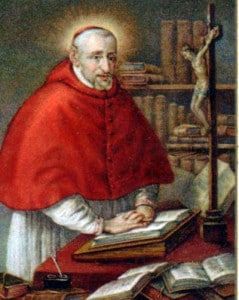
Consequently, when he died, there was a general expectation that his cause would be presented promptly. And so it was, Pope Urban VIII in 1627, when he was entitled to the title of Venerable.
But a technical obstacle, arising from Urban VIII’s own general legislation on beatifications, meant that the process had to be extended.
Although it was re-introduced on several occasions (1675, 1714, 1752 and 1832), and although on each occasion the vote was overwhelmingly in favour of beatification, it took many years to succeed.
This was partly due to the influence of some personalities who cast negative votes, Barbarigo, Casante and Azzolino in 1675 and Passionei in 1752, but also for reasons of political expediency. Bellarmine’s name is closely associated with a doctrine of papal authority that the regalist politicians of the French court found most abhorrent.
His cause for canonisation was finally started in 1627, but was delayed until 1930 for political reasons arising from his writings. In 1930, Pope Pius XI (see: What is the name of the current Pope in the Vatican) beatified him and the following year declared him a Doctor of the Church.
Saint Robert’s shrine and legacy
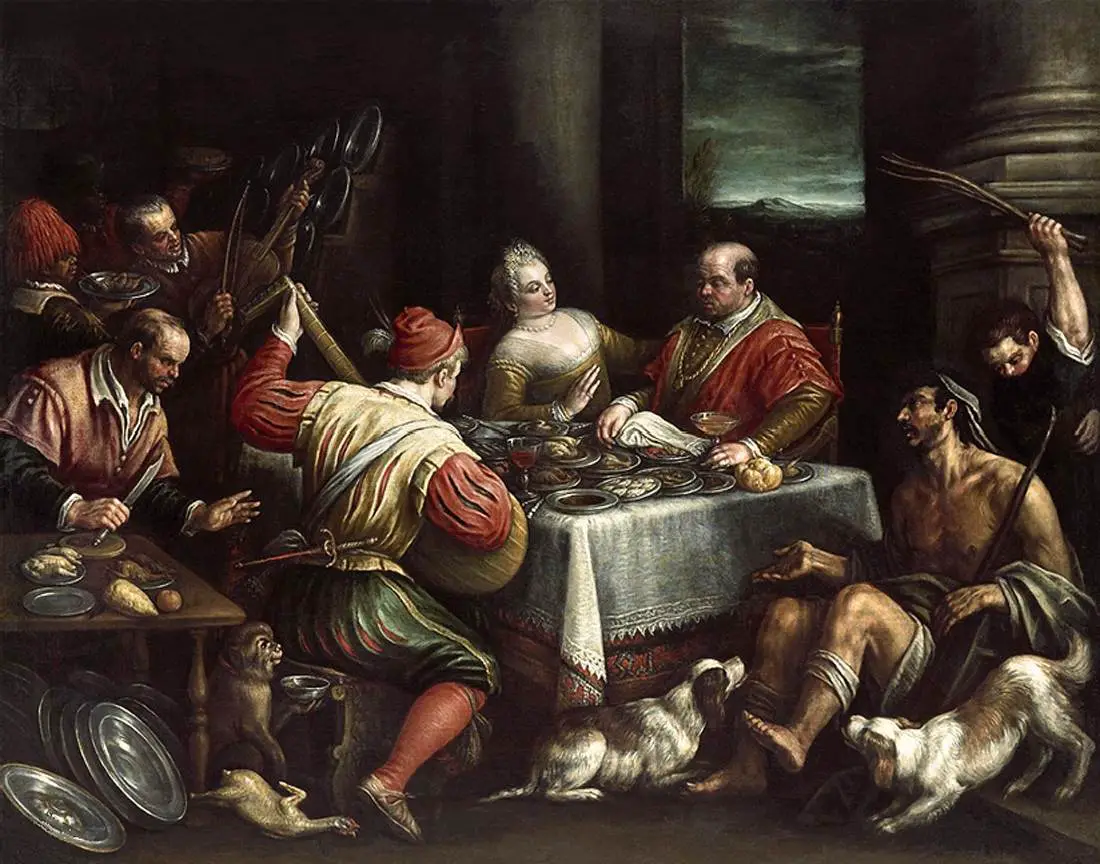
In the General Roman Calendar, St Robert Bellarmine’s feast day is 17 September, the day of his death, but some continue to use calendars from before 1969; for 37 years his feast day was 13 May. His legacy includes Bellarmine University in Louisville, Kentucky, Bellarmine College Preparatory in San Jose, California, and Bellarmine Preparatory School in Tacoma, Washington, also named after him.

Saint Joseph’s University, Fairfield University and Seattle University have a Bellarmine Hall dedicated to the saint.
Sogang Jesuit University in Seoul, South Korea, has a Bellarmine residence hall named after the Italian saint.
St Robert Bellarmine Church in Bayside Hills in Queens County in New York of the Diocese of Brooklyn was the original site of the Shrine of Our Lady of the Roses, where the alleged Marian apparitions to Veronica Lueken took place.
The apparitions of Veronica Lueken were condemned as “contrary to the faith of the Catholic Church” by Bishop Francis Mugavero of the Diocese of Brooklyn.
Bellarmine University
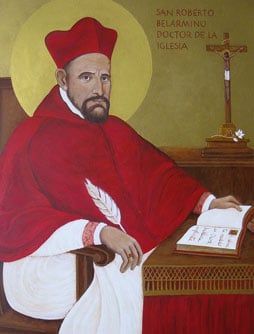
It is an independent, private, Catholic university in Louisville, Kentucky, United States.
It is a liberal arts institution opened on October 3, 1950, as Bellarmine College, established by Archbishop John A. Floersh of the Archdiocese of Louisville and named in honor of St. Robert Bellarmine.
The name was changed by the Board of Trustees in 2000 to Bellarmine University.
Today’s university is organized into seven colleges and schools and confers numerous Bachelor’s and Master’s degrees in more than 50 academic majors, along with five doctoral degrees, and is currently classified as a master’s university.
Bellarmine High School
This high school is very important in the locality where it is located, some of its students study and prepare themselves a lot to opt for a place in this school, its facilities are very good and its teachers are exceptional, watch this high school in this video.
It is a private, Jesuit, all-male high school in the College Park neighbourhood of San Jose, California. Founded in 1851, Bellarmine and its sister San Jose Catholic School Girls, Notre Dame High School, are the oldest high schools in the state. Bellarmine is a Catholic school within the Diocese of San Jose and is sponsored by the Society of Jesus. The other colleges, as noted above, only have halls in honour of St. Robert.
The work of St Robert
The books of St Robert Bellarmine bear the stamp of his time; the pursuit of literary elegance, called “maraviglia”, had given way to the desire to accumulate as much material as possible, to embrace the whole field of human knowledge and to incorporate it into theology. His controversial works provoked many reactions and were studied for several decades after his death.
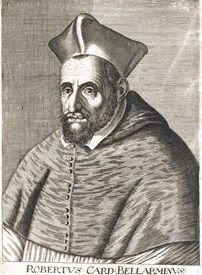
In Louvain he made extensive studies of the Church Fathers and scholastic theologians, which gave him the material for his book “scriptoribus ecclesiasticis”, published in Rome in 1613.
It was later revised and expanded by Sirmond, Labbeus and Casimir Oudin, and Bellarmine also wrote the preface to the new Sixtus-Clementine Vulgate.
His research resulted in the Controversiae, first published between 1581 and 1593. This great work was the first attempt to systematise the various religious disputes between Catholics and Protestants.
St Robert calmly reviewed the problems and was very fair at the time of writing, from this work come the most famous sentences of St Robert Bellarmine.
He devoted eleven years to it while he was at the Roman College. In August 1590, Pope Sixtus V decided to put the first volume of the “Controversiae” on the Index because of Bellarmine’s arguments. He said that the Pope was not the temporal ruler of the whole world and that temporal rulers did not derive their authority to rule from God but from the consent of the governed.
You can meet other doctors of the Catholic Church below, the list is very extensive, in this article you will only meet some of them, if you are interested in the subject don’t forget to investigate more, there is very interesting information to learn.
https://www.youtube.com/watch?v=yzskjSXcQbo
However, Sixtus died before the revised Index was published and the next Pope, Urban VII, removed the book from the Index during his brief reign of twelve days. In 1597 he wrote the Catechism in two versions (short and complete), which was translated into 50 languages and became one of the biggest bestsellers and the official teaching of the Church in the 17th-19th centuries.
Under Pope Paul V, a major conflict arose between Venice and the papacy. Paolo Sarpi, as spokesman for the Republic of Venice, protested against the papal interdict and reaffirmed the principles of the Councils of Constance and Basel, denying the pope’s authority in temporal matters. He wrote three replies to the Venetian theologians and may have warned Sarpi of an impending murderous attack in September 1607, when a headless friar and brigand named Rotilio Orlandini planned to kill Sarpi for the sum of 8,000 crowns.
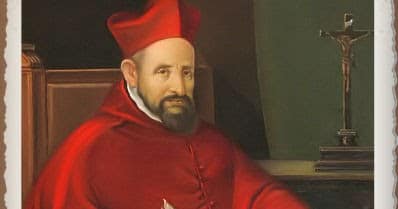
Orlandini’s plot was discovered and he and his accomplices were arrested when they crossed from the Pope’s territory into Venice. During his retreat he wrote several short books to help the common people in their spiritual life: Ascensione mentis in Deum per scalas rerum creatorum opusculum, translated into English as The Ascent of the Spirit to God, The Art of Dying and The Seven Words on the Cross.
Prayer to St Robert Bellarmine
St Robert has some very miraculous prayers that you will surely want to learn, below I will show you some of them, but if you want another option you can turn to the prayers of St Catherine, this one is also very miraculous.
The Lord loved him and adorned him, Alleluia, clothed him in a robe of glory, Alleluia.
Oh excellent doctor, oh light of the holy Church, oh blessed Robert, lover of the divine law, pray for us the Son of God. Alleluia.
Let us pray.
O God, who adorned Blessed Robert, Your Bishop and Doctor, with wonderful knowledge and virtue to expose the delusions of error and to defend the rights of the Apostolic See, grant by his merits and intercession that the love of truth may increase in us and that the wandering souls may return to the unity of Your Church. Through our Lord Jesus Christ
your Son, who lives and reigns with you in the unity of the Holy Spirit, one God, for ever and ever.
O holy and righteous, rejoice in the Lord, alleluia; for blessed are the people whom God has chosen to be his inheritance, alleluia.
Well done, beloved, in the sight of the Lord, alleluia.
This is the death of his saints, alleluia.
Let us pray.
Grant, O Lord, that this holy feast of your blessed martyrs, Nereus, Achilleus, Domitilla and St. Pancratius, may always help us in your service, so that we may be worthy to follow your commandments.
There are many prayers of San Roberto, we just have to pray them with a lot of faith and devotion, this is true for every saint, they will only listen to you if you sincerely believe in them and you are sure of the help they will give you, nowadays it is difficult to have faith, but if we believe in them with our heart, although we live in very difficult times, they will surely give our soul the consolation we need.
The above is a prayer that you can use at any time when you need it, it is not a very long prayer but if you want a shorter one this option is ideal for you, you can also try the prayer to St Martin Caballero
Dear Jesus, St. Robert is the patron saint of catechumens because he wrote two catechisms and spent much of his time teaching the faith to children. I ask you to pray for those in the Church who teach the faith and for their pupils. Bless the teachers, Lord, and anoint the minds of those who receive instruction, that they may understand it so powerfully that their lives will be changed forever.
Provide more opportunities, including parish missions, for members of the Church to learn more about the faith, and inspire large numbers of people to attend these events. St Robert, pray for us. Amen.

For a special petition, you can pray this prayer, remembering to pray it always with much faith and a good attitude; this is a prayer to the intercession of St Robert; if you wish to be helped by another Saint, you can pray the prayer to St Anthony of Padua for marriage.
O God, who hast endowed Blessed Robert, Thy Bishop and Doctor, with wonderful wisdom and virtue, that he might break the snares of error and defend the Apostolic See: grant by his merits and intercession that we may grow in the love of the truth, and that the hearts of those in error may return to the unity of Thy Church. Through our Lord (You must make your request.)
Down Syndrome Prayer
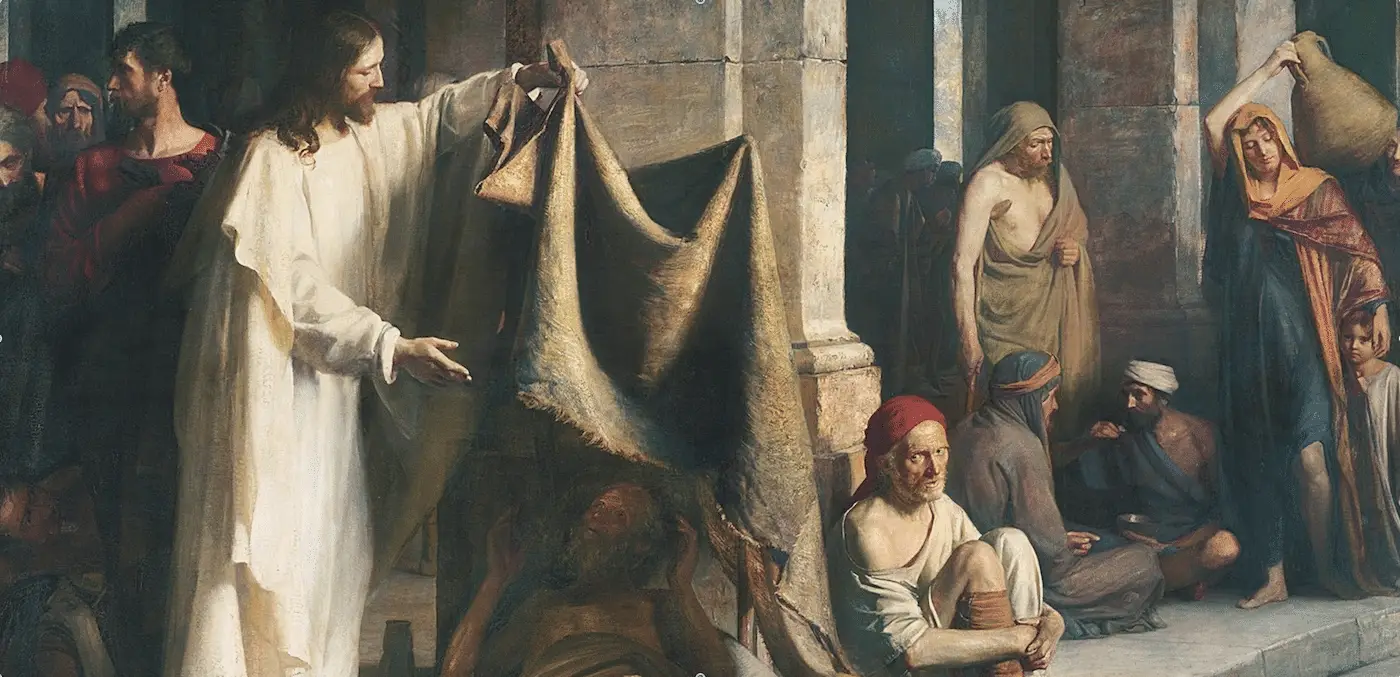
St Robert has a special prayer for these special people, if you find yourself in this situation and need help, do not forget to turn to him, he will surely help you, you just have to have a lot of faith, do not forget to also try the prayer to St Michael the Archangel for health.
O holy St. Robert Bellarmine, I pray for your loving intercession for the needs of people with Down syndrome, may you be on the side of all mothers with children, may she have the faith to overcome worldly thoughts and fears that might distract her from recognising the precious gift of life growing within her.
May she stand with parents, families, friends, teachers and caregivers who have the grace to know that the Lord’s gracious hand guides them through the joys and struggles of life. May they put their hope and trust in Jesus.
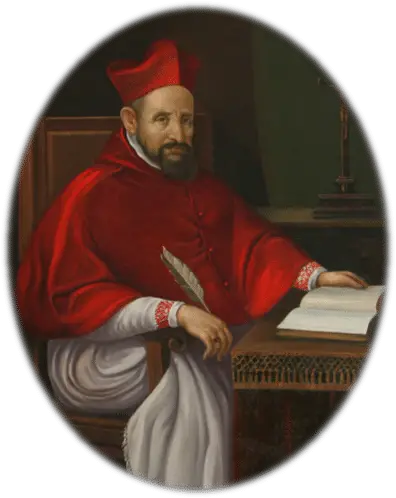 St Robert Bellarmine, help me to keep my eyes open for opportunities to show my love like Jesus and not to let fear of the unknown keep me from doing God’s will. I ask you to entrust these intentions to the Blessed Virgin Mary so that she may place them before the altar of the Eucharistic Heart of Jesus. Amen.
St Robert Bellarmine, help me to keep my eyes open for opportunities to show my love like Jesus and not to let fear of the unknown keep me from doing God’s will. I ask you to entrust these intentions to the Blessed Virgin Mary so that she may place them before the altar of the Eucharistic Heart of Jesus. Amen.
Prayer before surgery
If you are going to undergo an operation, or a person close to you, you can pray this prayer, which is very powerful, as all of them, you must do it with much faith and love, San Roberto will not abandon you, you can also turn to another saint if you wish, for example to St. Beatriz.
O loving Father, I pour out my heart to you and ask for the intercession of St Robert Bellarmine that (name of person) will have a successful operation. Remove worries and fears and replace them with your thoughts of love, mercy and generosity. Help us to trust in divine providence that all will go according to Your plan.
Give the doctors, nurses and medical staff patience, kindness, wisdom and clarity to know exactly what is needed for the operation. Guide the surgeon’s hands for precision. May there be no complications and a speedy recovery so that (person’s name) may continue to know, love and serve the Lord in this world and fulfil his mission on this earth. Amen.
Intercession of St Robert Bellarmine
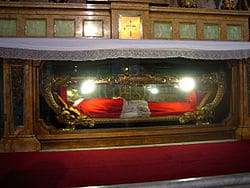
St Robert also intercedes for you before God, if you need a miracle, if you have some shortcomings, whatever your problem is and you need God’s help, St Robert will be ready to help you with the following prayer.
St Robert Bellarmine, teacher of the world, intercede for us with our Heavenly Father and guide us in all that we do for and with our children with Down syndrome.
Enlighten us to recognise and follow God’s will in caring for and loving these special and heavenly people.
Help us to see the people with Down syndrome in our lives as God’s gift to us. They teach us to live and love without measure. We need their simplicity, their laughter, their gentle nature and above all their ability to love. We ask this through Jesus Christ, your Son, our Lord, in whom we put all our trust. Amen. St Robert Bellarmine, pray for us!
Another prayer of this kind is the following one, which, like all the previous ones, is only a matter of faith.

Lord, with this new day, I know in the depths of my soul that you hear my prayer. I know that you can calm any fears I may have. Let me know that having a baby with Down syndrome will take me down a different path than I expected,
but not necessarily a more difficult one. Lord, with You I can do all things. Jesus, I lift up my soul to You and ask You to place it in Your Sacred Heart, safe from worry. Only in You can I find truth and happiness.
St Robert Bellarmine, I ask for your intercession with God that He may give me the wisdom to remove the fear of the unknown and increase my love, courage and strength to discern God’s will. May I firmly believe that all human life is blessed because God creates us out of love in His divine image and likeness.
Our Father, Hail Mary and Glory Be.

